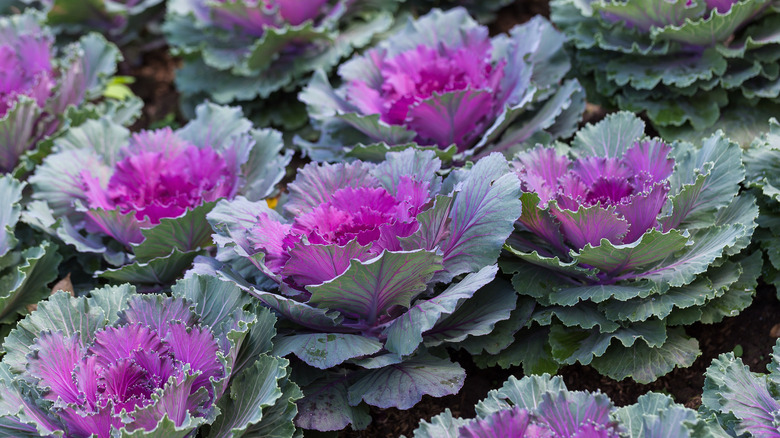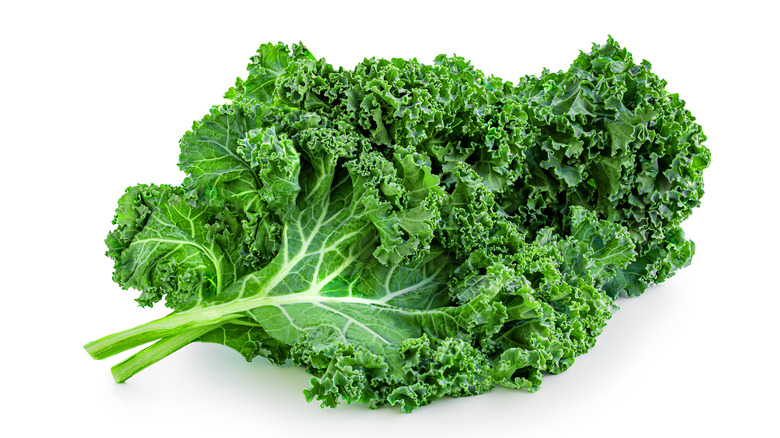Can You Get Sick From Eating Ornamental Kale?
Ornamental kale is pretty, but is it edible? That's a good question. And the answer is complicated, especially in some parts of the United States where kale is as common in the produce section of the grocery store as it is in autumn displays at the local garden center. According to Meadows Farms, varieties of ornamental kale are prized for the vivid color they bring to fall gardens and because they're hardy enough to withstand temperatures as low as 10 degrees Fahrenheit. But if you're craving a salad and don't have any lettuce, is it okay to harvest a few leaves and toss them with dressing? Yes. And no. Some varieties, including peacock kale, coral prince, kamone coral queen, color up, and chidori are safe to eat, but they're just not that tasty, according to MasterClass.
A member of the Brassica oleracea Acephala group, along with cabbage, broccoli, and collards, via Stuff Sure, ornamental kale can be consumed raw or incorporated into cooked dishes. More often, though, it's used as a garnish. In fact, for a long time, Pizza Hut was unofficially considered the largest buyer of kale in the U.S. — it was the standard garnish on the chain's popular (and pre-pandemic) salad bars.
Interestingly, culinary kale is also part of the Brassica oleracea Acephale group, according to Gardner's Path. The key difference between the two? Ornamental kale is a hybrid, cultivated specifically to stand out in landscaped gardens.
Beauty is in the eye of the beholder
That's why ornamental kale is so much prettier than the bunches of kale at the grocery store or farmers' market. Okay. They're all pretty. No judgment here. Some culinary varieties, like Redbor and Scarlet (via Gardner's Path), give ornamental varieties a run for their money. However, the ornamental varieties, with their gradated purple, pink, and white leaves cultivated to open like a flower blossom, are probably better-suited to front-yard landscaping than backyard vegetable gardening. But does it measure up in terms of nutrition? Aside from what some kale connoisseurs describe as a bitter taste (via Stuff Sure), likely a result of a cultivation process that focused on appearance over flavor, ornamental varieties of kale go head to head with culinary kale.
According to Stuff Sure, ornamental kale is rich in vitamins A, C, and K. It's also a good source for calcium and a study published by BMC Genomics revealed the bright colors cultivated to make ornamental kale attractive for landscaping are the result of compounds known as anthocyanins, the same antioxidants found in blueberries. According to Cleveland Clinic, the health-benefit potentials of consuming anthocyanins include reduced blood pressure, reduced risk of heart disease, and improved brain function.
Bottom line: Not only is ornamental kale safe to eat, it's actually good for you — with a few caveats. Gardner's Path warns kale roots of any variety can be poisonous and kale plants purchased at a garden center may have been treated with pesticides or herbicide not approved for human consumption.

